

Gold Mine
Photos from 1983
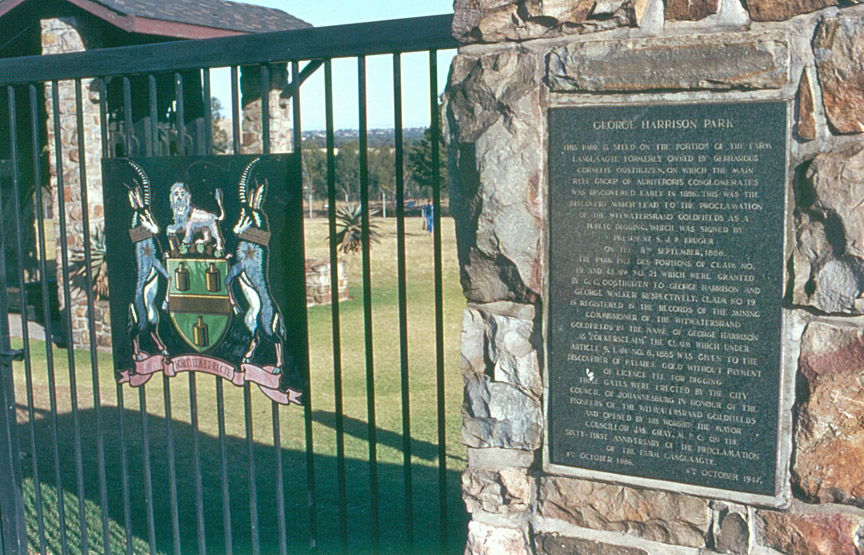
George Harrison Park
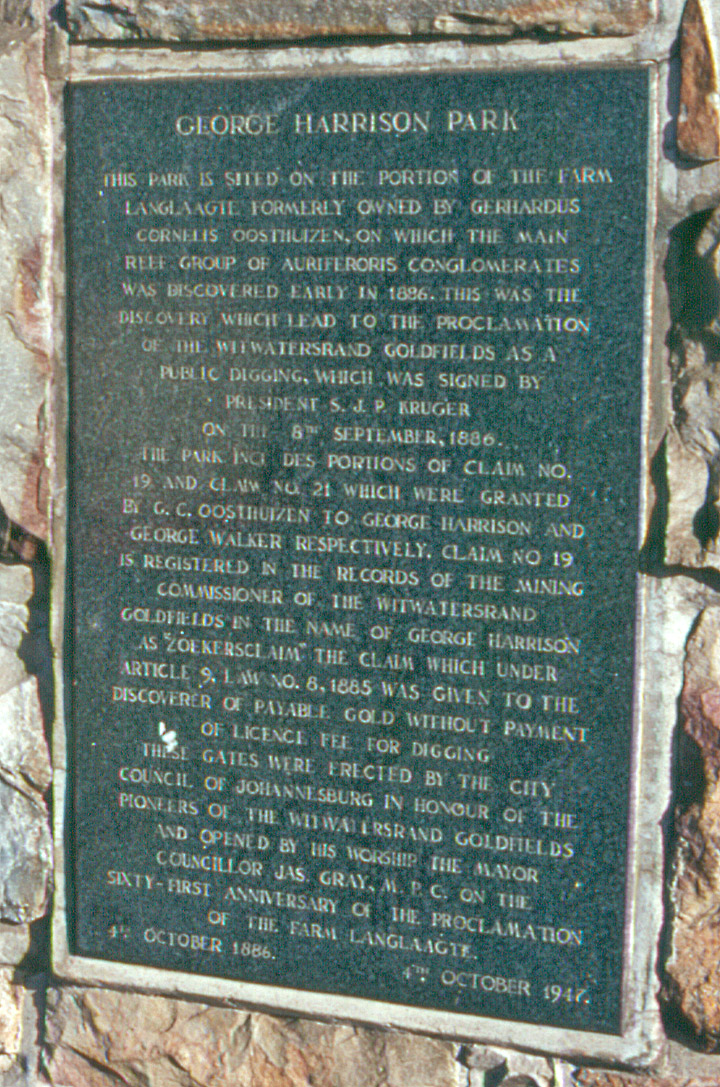
first gold discovery site on Witwatersrand

claim 32
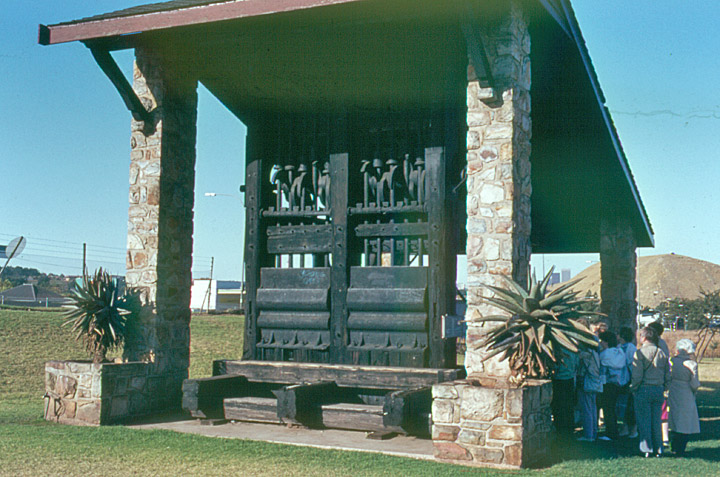
early gold ore crusher
Witwatersrand, rocky uplift in northeastern South Africa. Also known as the Rand, it is the most productive gold-mining district in the world. The uplift is 100 km (60 mi) long in an east-west direction, has a maximum width of 40 km (25 mi), and reaches an elevation of more than 600 m (2,000 ft) above the surrounding plateau area. Surface gold was discovered in the region in 1884, and active mining operations began in 1886, the same year in which Johannesburg was founded as a gold-mining settlement. The main gold reef was discovered in the region in 1889, at a depth of 177 m (581 ft).

taking the train to the gold mine
The great extent of the deposits, both laterally and in depth, has permitted
exploitation of the area on a large and very profitable scale. In the 1930s,
following the abandonment by many countries of the gold standard and the
initiation by the United States of unlimited gold purchases, the ore was mined
at a depth of 3,300 m (12,000 ft); subsequently, the deepest workings averaged
2,700 m (9,000 ft) in depth. Coal and manganese are also mined in the region.
Industrial establishments include the Germiston gold refinery (the largest in
the world), foundries, engineering shops, and cement plants. Johannesburg is the
chief city of the Rand.
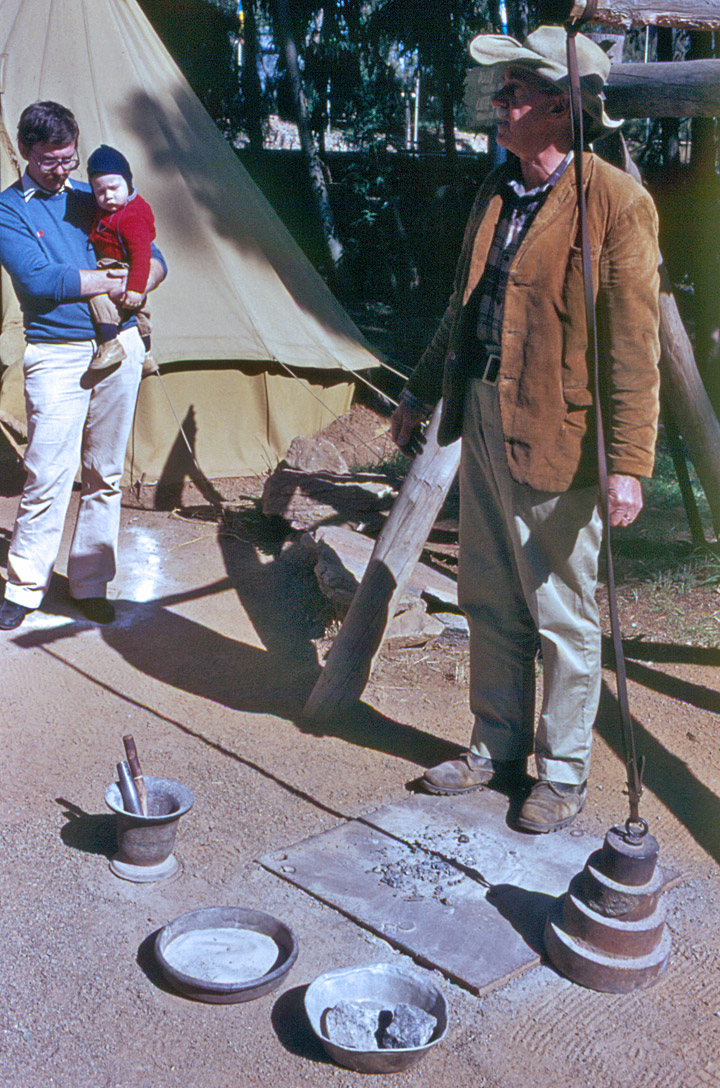
The tools of primitive gold mining
The simplest process used for mining
gold is panning, using a circular dish often with a small pocket at the bottom.
The prospector fills the dish with gold-bearing sand or gravel, holds it under a
gentle stream of water, and swirls it. The lighter parts of the gravel are
gradually washed off and the gold particles are left near the center of the pan
or in the pocket.
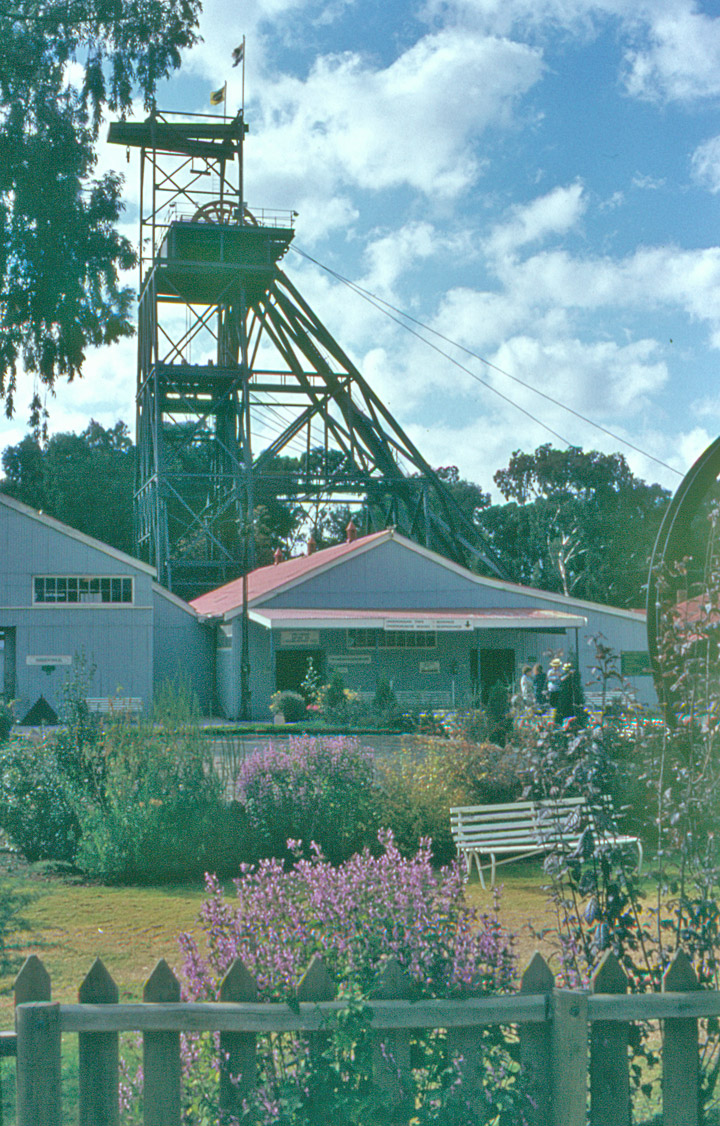
This gold mine is located in
Johannesburg, South Africa, a city that at one time had the world's largest
known gold deposits. The golden spoil heaps, the result of decades of gold
extraction, are a typical sight in the city. Today Johannesburg has few gold
mines, but extensive gold mining continues in the Witwatersrand, a rocky uplift
region beyond the city.
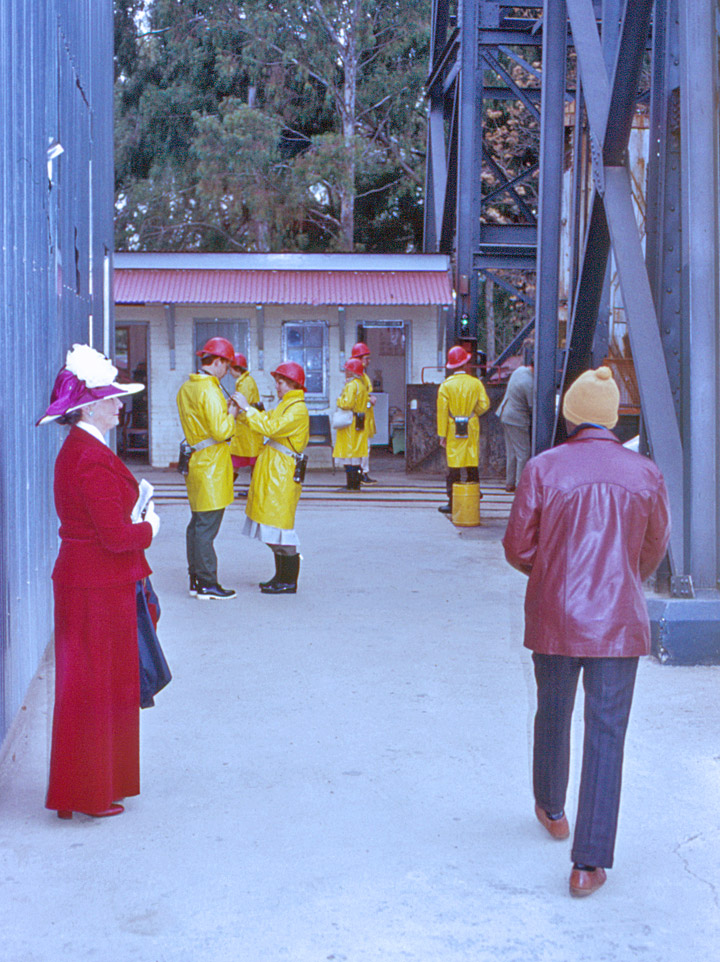
being suited to travel into the
mine
(slickers, hard hats and mine lamps)
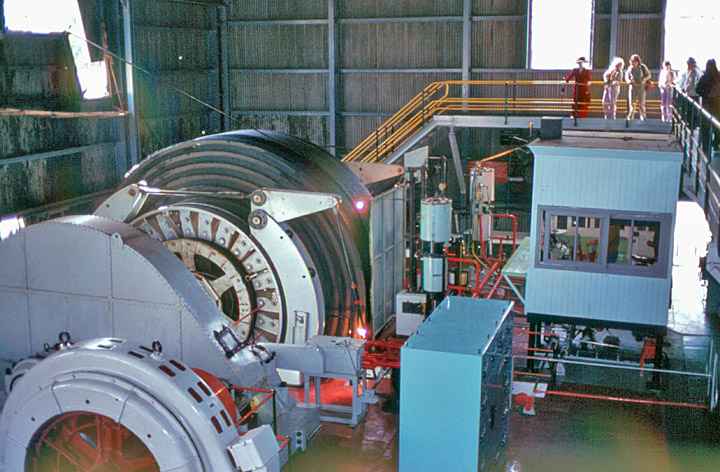
the cable winding machinery to raise and lower the people and cargo containers into the mine
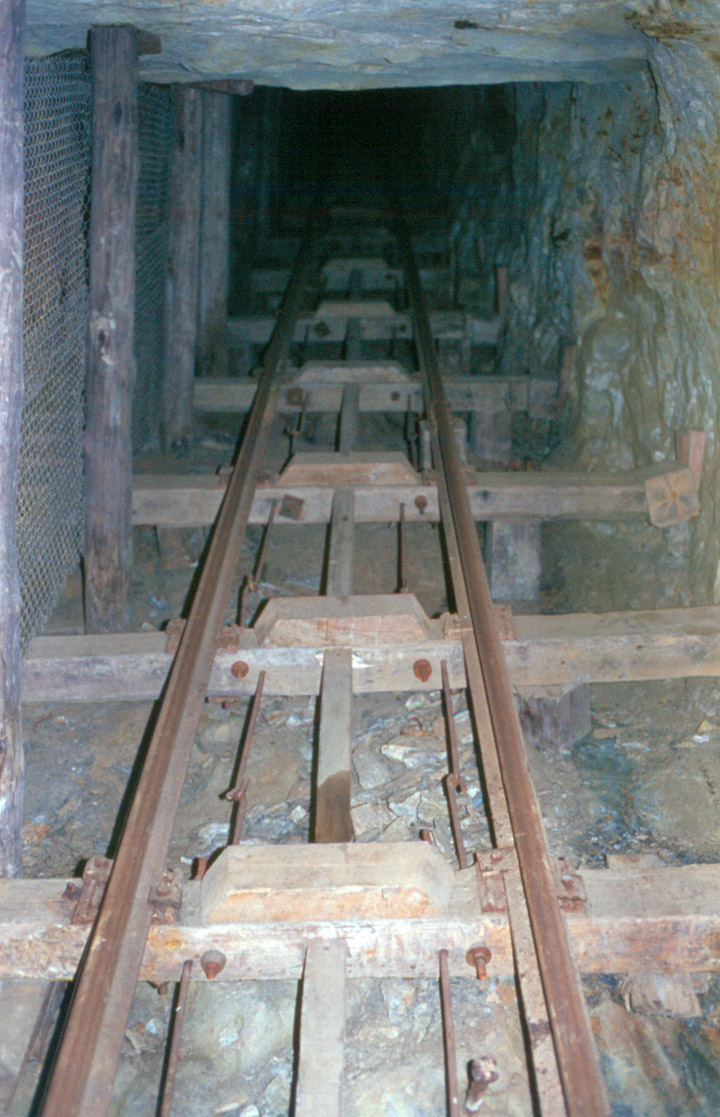
track in the mine over a mile deep
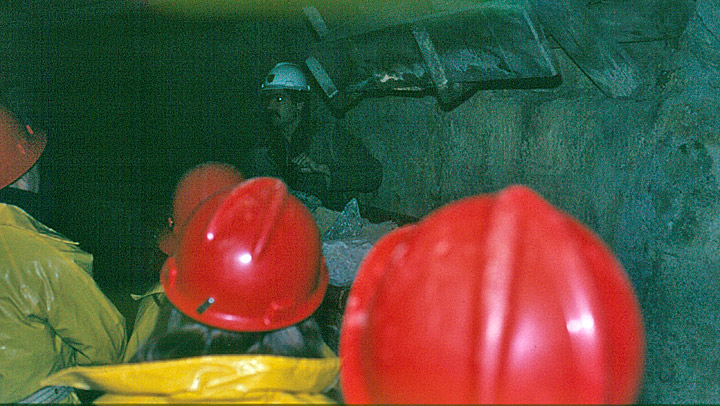
viewing the mine
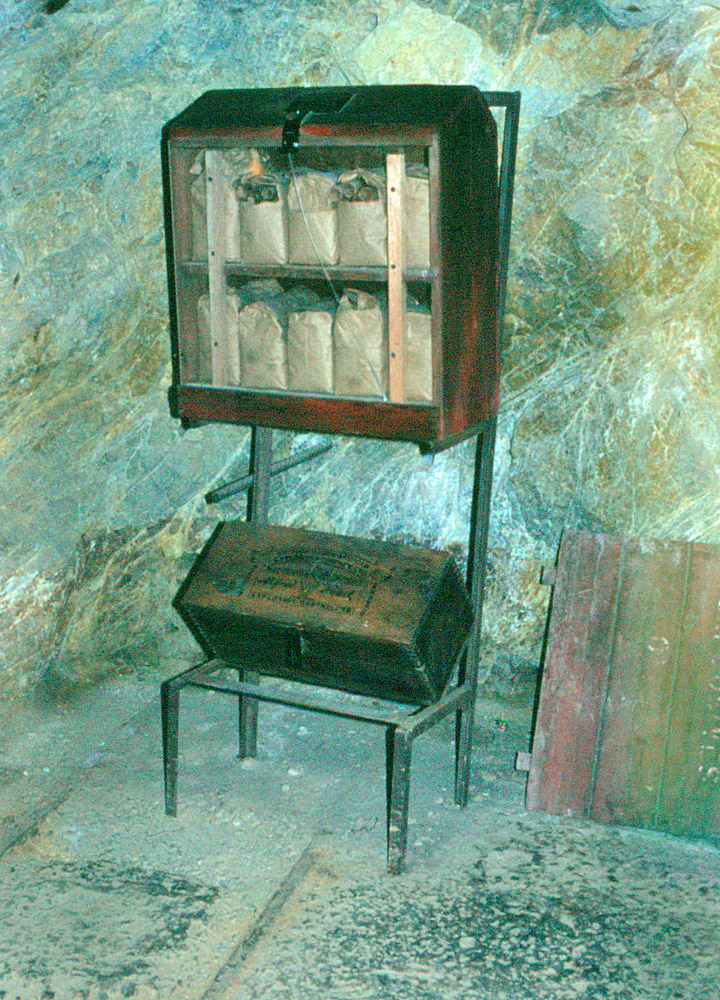
mine explosive material storage
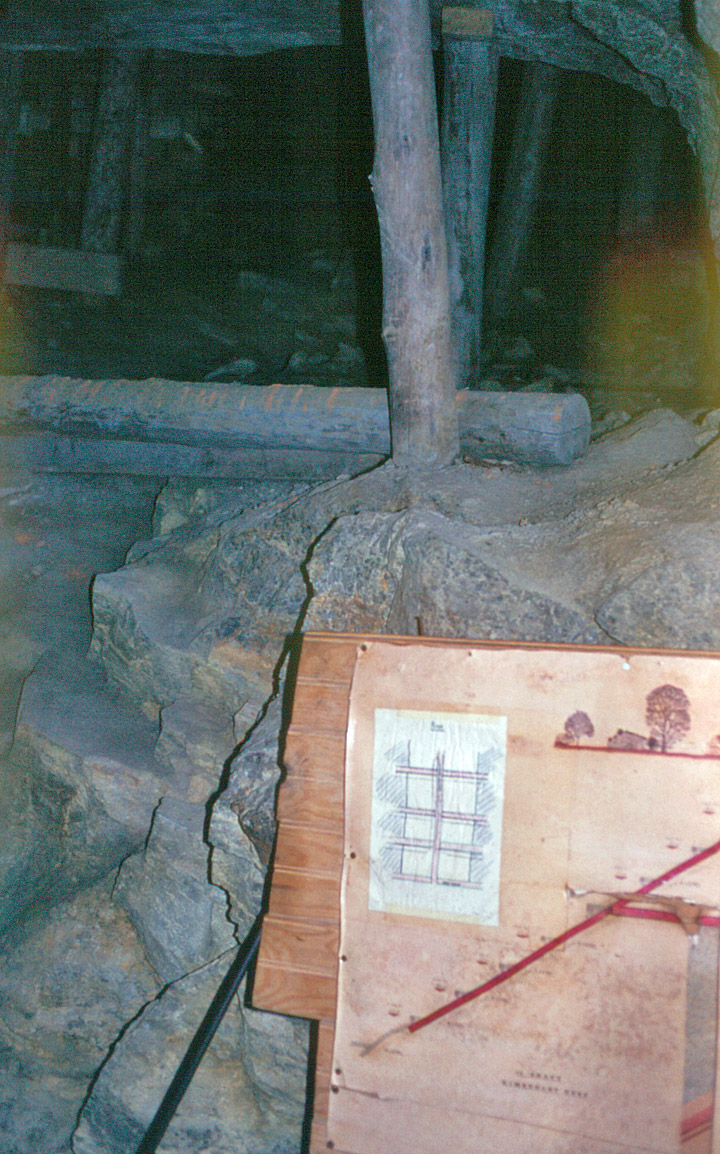
the shoring timbers
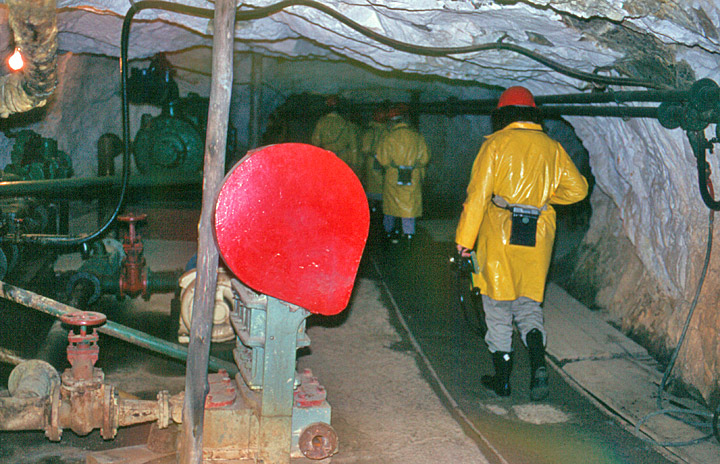
walking through the mine corridor
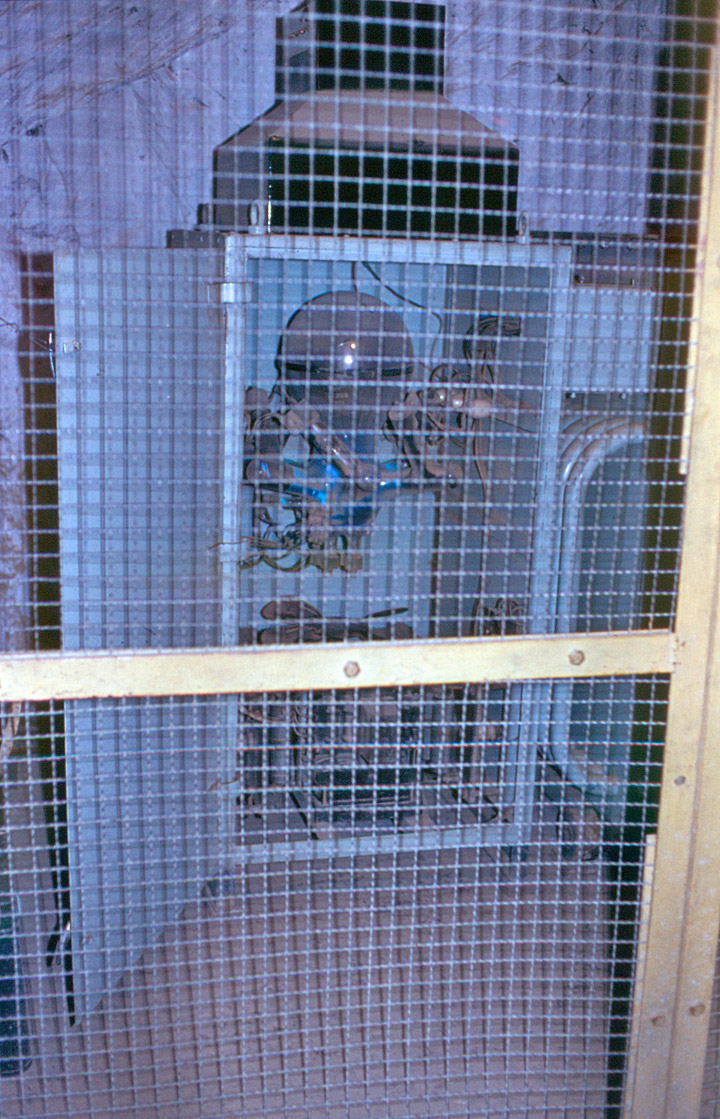
power machinery
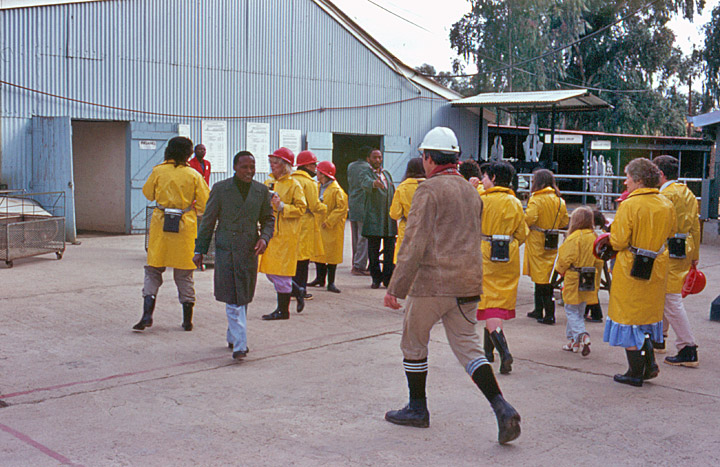
walking to the refinery
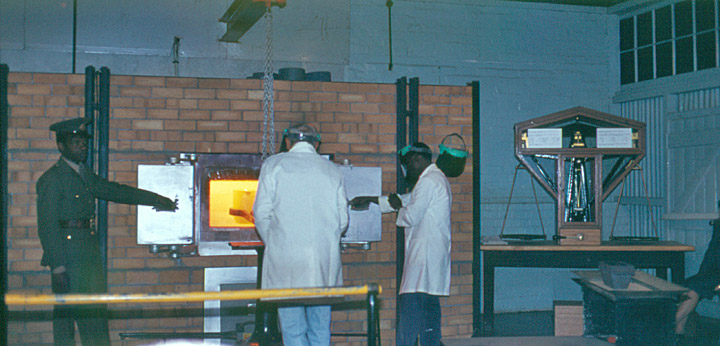
heating the gold
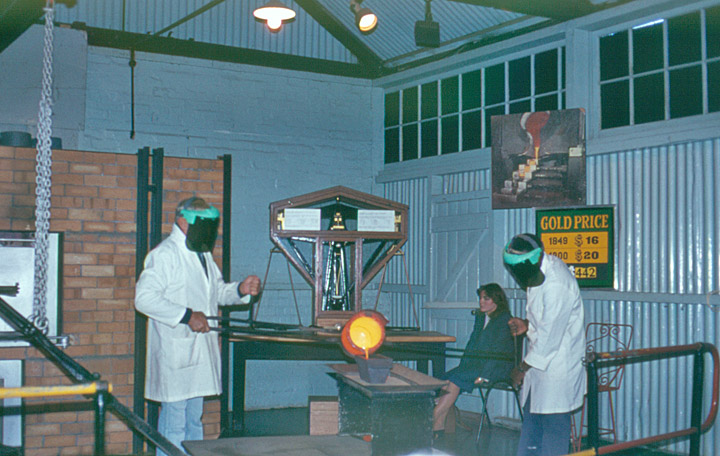
liquid gold being poured into the mold
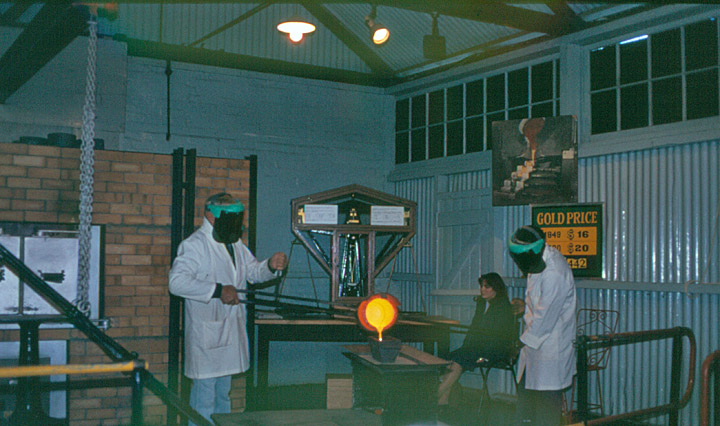
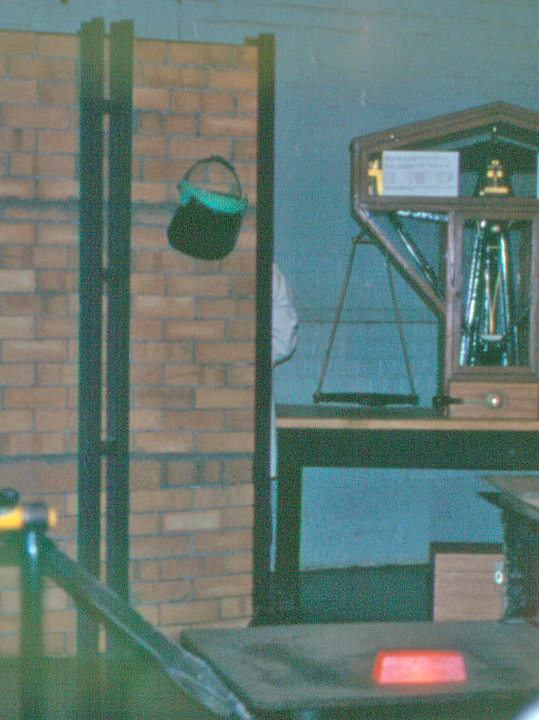
the Gold ingot